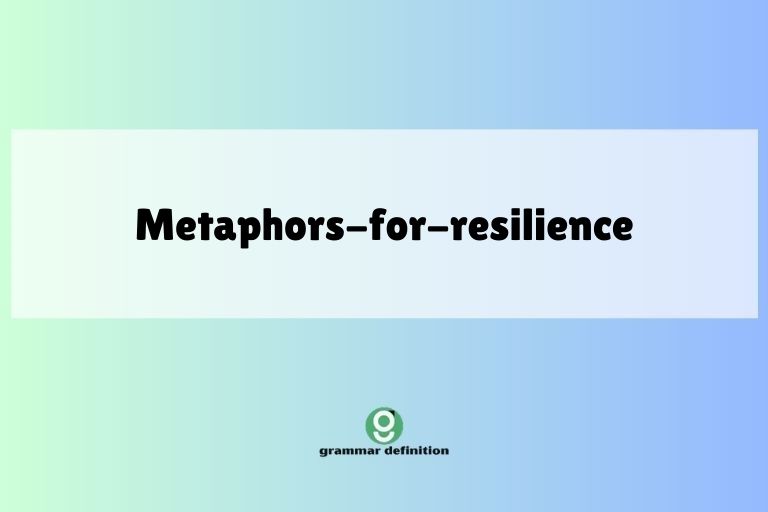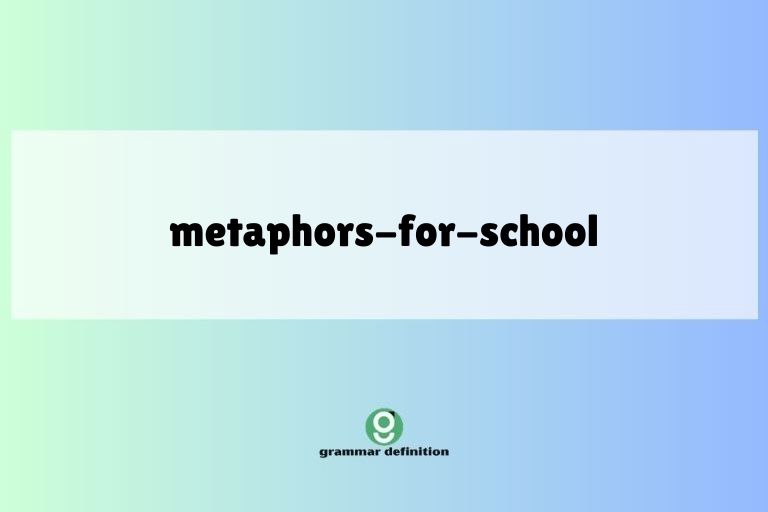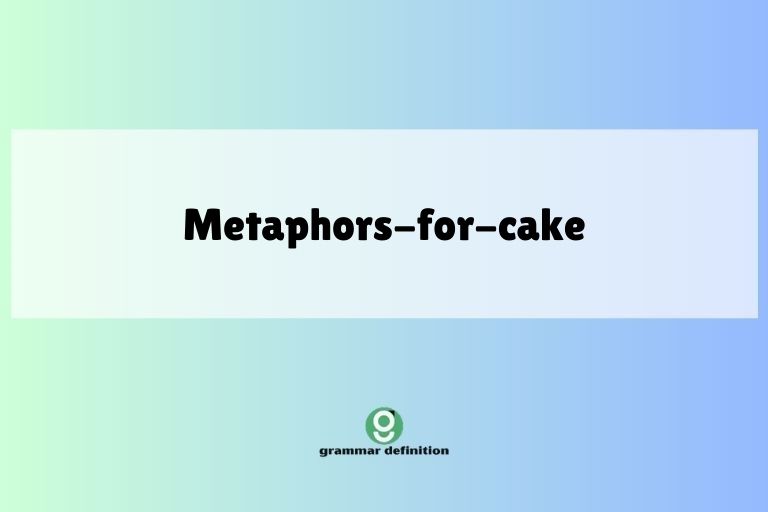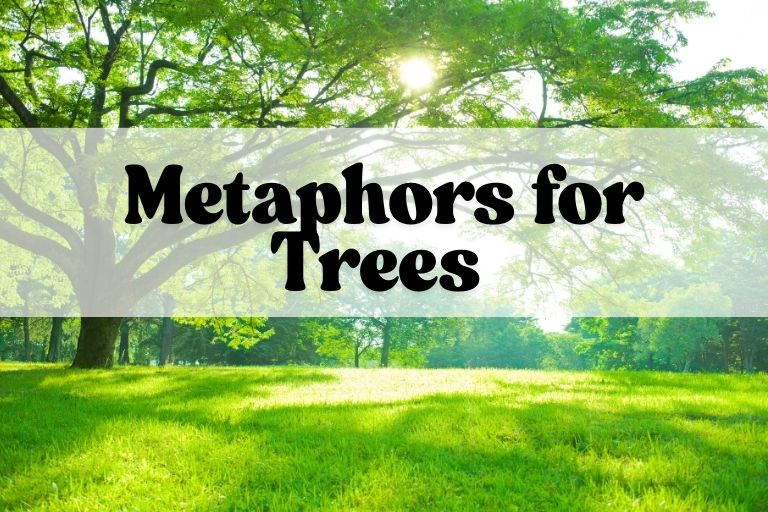Metaphors for Resilience: A Comprehensive Guide

Resilience, the ability to bounce back from adversity, is a crucial quality in all aspects of life. While resilience itself isn’t a grammatical concept, the language we use to describe and understand it often relies on metaphors.
Understanding how metaphors function to represent resilience can enhance our comprehension and appreciation of this vital attribute. This article will explore the various types of metaphors used to depict resilience, providing examples, usage rules, and practice exercises.
This guide is suitable for English language learners, writers, and anyone interested in deepening their understanding of resilience through the power of language.
This comprehensive guide will help you understand the diverse ways metaphors are used to describe resilience, enhancing both your comprehension and expression. By exploring various examples and practical exercises, you will gain a deeper understanding of how language shapes our perception of resilience.
Table of Contents
- Introduction
- Definition of Metaphor and Resilience
- Structural Breakdown of Resilience Metaphors
- Types and Categories of Resilience Metaphors
- Examples of Resilience Metaphors
- Usage Rules for Resilience Metaphors
- Common Mistakes When Using Resilience Metaphors
- Practice Exercises
- Advanced Topics in Resilience Metaphors
- Frequently Asked Questions
- Conclusion
Definition of Metaphor and Resilience
What is a Metaphor?
A metaphor is a figure of speech that directly compares two unrelated things, asserting that one thing *is* another. Unlike similes, which use “like” or “as” to make a comparison, metaphors imply a resemblance, transferring qualities from one subject to another to create a vivid image or deeper understanding.
Metaphors are powerful tools for enhancing communication, making abstract concepts more concrete and relatable.
For example, saying “He is a lion in battle” doesn’t mean the person is literally a lion, but it conveys their bravery and strength by associating them with the characteristics of a lion. Metaphors enrich language and allow for concise yet impactful expression.
What is Resilience?
Resilience is the ability to recover quickly from difficulties; it’s toughness. It encompasses the mental, emotional, and behavioral capacity to face and overcome challenges, setbacks, and adversity.
Resilience is not simply about bouncing back to the original state; it often involves adapting and growing stronger as a result of the experience. It is a dynamic process influenced by various factors, including personal characteristics, social support, and coping strategies.
Resilience is essential for navigating the inevitable ups and downs of life. It equips individuals with the skills to persevere in the face of stress, trauma, tragedy, or significant sources of adversity.
The ability to adapt and thrive despite challenges is what defines true resilience.
Linking Metaphors and Resilience
Metaphors provide a powerful way to conceptualize and communicate the abstract nature of resilience. By using metaphors, we can relate resilience to tangible and familiar concepts, making it easier to understand and appreciate.
For instance, comparing resilience to a rubber band that stretches and returns to its original shape helps visualize the ability to recover from stress. Similarly, describing someone as “an oak tree weathering a storm” evokes the image of strength and steadfastness in the face of adversity.
These metaphorical representations make resilience more accessible and relatable, thus enhancing our understanding of its importance.
Metaphors help us understand resilience by translating it into something we can visualize and relate to. They create mental images that capture the essence of bouncing back, adapting, and growing stronger, offering a more profound appreciation of this crucial human trait.
Structural Breakdown of Resilience Metaphors
Source Domain
The source domain is the concept or idea from which the metaphor draws its characteristics. It is the familiar, concrete area that is used to describe the more abstract or complex target domain. In the context of resilience metaphors, the source domain could be anything from nature (e.g., a tree, a river) to construction (e.g., a building, a bridge) to physical objects (e.g., a spring, a rubber band). The key is that the source domain provides the tangible qualities that are then attributed to resilience.
For instance, if we say “She is like a rock,” the source domain is “rock,” and it provides qualities like strength, stability, and immovability. This helps to understand resilience in a more concrete way.
Target Domain
The target domain is the concept or idea that is being described or explained using the metaphor. In this case, the target domain is always resilience. Resilience, being an abstract concept, benefits from the concrete and relatable qualities provided by the source domain. The goal is to illuminate the various facets of resilience, such as the ability to recover, adapt, endure, and grow, through the lens of the source domain.
When we use metaphors, we’re essentially mapping the characteristics of the source domain onto the target domain, making the abstract more understandable. Therefore, the source domain provides a framework for understanding the target domain, which is resilience in this context.
Mapping
Mapping is the process of connecting the attributes of the source domain to the target domain. This involves identifying the specific qualities of the source domain that are relevant to resilience. For example, if we use the metaphor “Resilience is a bridge,” the mapping might include: the bridge’s ability to withstand weight and pressure (representing the ability to handle stress), its function of connecting two points (representing the ability to overcome obstacles), and its construction, which requires strength and stability (representing the inner resources needed for resilience).
Effective mapping ensures that the metaphor accurately and meaningfully represents resilience. It’s about highlighting the shared characteristics between the source and target domains to create a clear and insightful understanding.
Types and Categories of Resilience Metaphors
Nature Metaphors
Nature metaphors draw parallels between resilience and natural elements or phenomena. These metaphors often emphasize growth, adaptability, and the ability to withstand harsh conditions.
Examples include comparing resilience to a tree that bends in the wind but doesn’t break, a river that flows around obstacles, or a seed that germinates even in poor soil. Nature metaphors highlight the organic and enduring aspects of resilience.
These metaphors are particularly powerful because they tap into our innate connection with the natural world, making the concept of resilience more intuitive and relatable. The imagery of enduring landscapes and persistent life forms reinforces the idea that resilience is a natural and fundamental part of existence.
Building and Construction Metaphors
Building and construction metaphors equate resilience with the strength, stability, and durability of structures. These metaphors often involve images of buildings, bridges, or foundations.
For instance, describing someone as having a “strong foundation” suggests they possess the inner resources and support systems needed to weather challenges. Similarly, comparing resilience to a well-built bridge that can withstand heavy traffic emphasizes the ability to handle pressure and stress.
These metaphors emphasize the importance of preparation, planning, and inner strength in building resilience. They highlight the idea that resilience is not just about surviving, but about creating a solid and enduring structure that can withstand future challenges.
Physical Strength and Endurance Metaphors
Physical strength and endurance metaphors link resilience to physical capabilities, such as strength, stamina, and the ability to withstand pain or fatigue. These metaphors often involve images of athletes, warriors, or other figures known for their physical prowess.
For example, describing someone as “having the stamina of a marathon runner” suggests they possess the mental and emotional endurance needed to overcome long-term challenges. Similarly, comparing resilience to the strength of a weightlifter emphasizes the ability to handle heavy burdens.
These metaphors underscore the idea that resilience requires inner strength and determination. They highlight the importance of pushing through discomfort and persevering in the face of adversity, just as athletes train their bodies to endure physical stress.
Transformation Metaphors
Transformation metaphors depict resilience as a process of change, growth, and evolution. These metaphors often involve images of metamorphosis, such as a caterpillar transforming into a butterfly, or the refining process of turning raw materials into something valuable.
For example, describing someone as “emerging from the ashes like a phoenix” suggests they have overcome significant adversity and risen stronger than before. Similarly, comparing resilience to the process of turning coal into a diamond emphasizes the idea that pressure and hardship can lead to profound personal growth.
These metaphors emphasize that resilience is not just about bouncing back, but about evolving and becoming a better version of oneself through the experience of overcoming challenges. They highlight the potential for growth and positive change that can arise from adversity.
Navigational Metaphors
Navigational metaphors portray resilience as the ability to navigate through difficult circumstances, using images of journeys, maps, and guides. These metaphors emphasize the importance of direction, planning, and adaptability in the face of uncertainty.
For example, describing someone as “steering their ship through the storm” suggests they are actively managing their challenges and staying on course despite the difficulties. Similarly, comparing resilience to having a “compass to guide you” emphasizes the importance of having a clear sense of direction and purpose.
These metaphors highlight the proactive aspect of resilience, emphasizing the importance of taking control and making informed decisions even in the midst of chaos. They underscore the idea that resilience is not just about surviving, but about charting a course towards a better future.
Examples of Resilience Metaphors
Nature Metaphors Examples
The following table provides examples of nature metaphors used to describe resilience. Each example illustrates how qualities of the natural world, such as trees, rivers, and seeds, are used to represent different aspects of resilience, such as strength, adaptability, and growth.
| Metaphor | Explanation |
|---|---|
| She is an oak, weathering every storm. | Implies strength and ability to withstand adversity. |
| His resilience is like a river, flowing around obstacles. | Highlights adaptability and persistence. |
| They are like seeds, sprouting even in the harshest conditions. | Emphasizes the ability to grow and thrive despite challenges. |
| Her spirit is like the sun, always shining after the rain. | Suggests optimism and the ability to recover from sadness. |
| He is like a mountain, unyielding in the face of pressure. | Highlights steadfastness and resistance to stress. |
| Her heart is like the earth, always able to heal. | Emphasizes the ability to recover emotionally. |
| His mind is like a bamboo, bending but never breaking. | Highlights flexibility and endurance. |
| They are like wildflowers, blooming in unexpected places. | Emphasizes the ability to thrive in difficult circumstances. |
| Her soul is like the ocean, vast and unyielding. | Suggests depth and resilience in the face of challenges. |
| He is like a desert flower, finding beauty in harshness. | Highlights the ability to find positivity in adversity. |
| Her resilience is like a vine, growing stronger with each challenge. | Emphasizes growth and adaptation. |
| His determination is as constant as the tide. | Highlights unwavering commitment and persistence. |
| They are like resilient weeds, always finding a way to grow. | Emphasizes persistence and adaptability in tough conditions. |
| Her spirit is as bright as the stars, shining even in the dark. | Suggests hope and resilience in difficult times. |
| He is like a tree with deep roots, firmly grounded. | Highlights stability and inner strength. |
| Her resilience is a forest, strong and interconnected. | Emphasizes the power of community and support. |
| His courage is like a mountain stream, constantly flowing. | Highlights perseverance and determination. |
| They are like sunflowers, always turning towards the light. | Emphasizes optimism and hope. |
| Her resilience is like a seed that pushes through concrete. | Highlights determination and overcoming obstacles. |
| He is like a weathered rock, strong and enduring. | Emphasizes resilience through time and experience. |
| Her spirit is like a soaring eagle, free and unyielding. | Suggests overcoming challenges and achieving freedom. |
| His determination is a glacier, slowly but surely moving forward. | Highlights relentless progress despite obstacles. |
| They are like coral reefs, building strength over time. | Emphasizes gradual growth and resilience. |
Building and Construction Metaphors Examples
The following table showcases building and construction metaphors that illuminate the structural and enduring aspects of resilience. These metaphors relate resilience to the strength and stability of buildings, foundations, and bridges.
| Metaphor | Explanation |
|---|---|
| Her resilience is a fortress, protecting her from harm. | Implies strong defense mechanisms. |
| He built his life on a foundation of resilience. | Highlights the importance of inner strength and stability. |
| They are constructing a bridge to a better future. | Emphasizes overcoming obstacles and connecting to new opportunities. |
| Her spirit is a skyscraper, standing tall against the odds. | Suggests strength and ambition. |
| He is a solid structure, unyielding to external pressures. | Highlights stability and resistance to stress. |
| Her heart is a well-built home, always offering shelter. | Emphasizes emotional stability and support. |
| His mind is a carefully designed blueprint, resilient and adaptable. | Highlights strategic thinking and flexibility. |
| They are renovating their lives, making them stronger. | Emphasizes personal growth and improvement. |
| Her soul is an unbreakable tower, standing firm through trials. | Suggests unwavering strength and resilience. |
| He is a sturdy wall, protecting those he loves. | Highlights protectiveness and dependability. |
| Her resilience is a scaffold, supporting her during construction. | Emphasizes temporary support leading to a strong outcome. |
| His determination is the cement holding his dreams together. | Highlights the binding force of perseverance. |
| They are like architects, designing a resilient future. | Emphasizes planning and strategic thinking. |
| Her spirit is a lighthouse, guiding others through darkness. | Suggests hope and guidance in difficult times. |
| He is a reinforced beam, providing strength and stability. | Highlights reliability and support. |
| Her resilience is a dam, holding back the flood of despair. | Emphasizes the ability to control emotions and prevent overwhelm. |
| His courage is the cornerstone of his success. | Highlights the fundamental importance of bravery. |
| They are like engineers, problem-solving to build resilience. | Emphasizes analytical thinking and solution-oriented approach. |
| Her resilience is a bridge, connecting past trauma to future healing. | Highlights the ability to move forward from difficult experiences. |
| He is a stable foundation, providing support for others. | Emphasizes reliability and strength as a source of support. |
| Her spirit is like a well-constructed building, designed to withstand any storm. | Suggests careful planning and inherent strength. |
| His determination is a load-bearing wall, essential for stability. | Highlights the critical role of perseverance in maintaining balance. |
| They are like builders, constantly reinforcing their inner strength. | Emphasizes ongoing effort and commitment to personal growth. |
Physical Strength Metaphors Examples
This table presents examples of physical strength metaphors used to describe resilience. These metaphors associate resilience with physical capabilities, such as strength, endurance, and the ability to withstand pressure, illustrating the inner fortitude needed to overcome adversity.
| Metaphor | Explanation |
|---|---|
| Her resilience is like steel, unbending under pressure. | Implies strong resistance to stress. |
| He has the stamina of a marathon runner, never giving up. | Highlights endurance and persistence. |
| They are warriors, fighting for their dreams. | Emphasizes courage and determination. |
| Her spirit is an iron fist, unyielding and strong. | Suggests unwavering strength and resolve. |
| He is a powerhouse, overcoming every obstacle. | Highlights inner strength and ability to succeed. |
| Her heart is a resilient muscle, growing stronger with each beat. | Emphasizes emotional strength and recovery. |
| His mind is a well-trained athlete, focused and disciplined. | Highlights mental fortitude and focus. |
| They are like boxers, always ready to face the next round. | Emphasizes readiness and resilience in the face of challenges. |
| Her soul is a tireless dancer, gracefully navigating life’s challenges. | Suggests adaptability and grace under pressure. |
| He is a human shield, protecting others from harm. | Highlights selflessness and protectiveness. |
| Her resilience is a spring, bouncing back after every setback. | Emphasizes the ability to recover quickly. |
| His determination is a muscle, growing stronger with use. | Highlights the importance of practice and effort. |
| They are like mountain climbers, conquering every peak. | Emphasizes ambition and overcoming challenges. |
| Her spirit is a tightrope walker, balancing grace and strength. | Suggests poise and resilience in precarious situations. |
| He is an unbreakable chain, linking strength and perseverance. | Highlights the connection between inner strength and persistence. |
| Her resilience is a shield, deflecting negativity and doubt. | Emphasizes protection from harmful influences. |
| His courage is a sword, cutting through obstacles and fears. | Highlights bravery and the ability to overcome challenges. |
| They are like weightlifters, building strength with each repetition. | Emphasizes the process of gradual improvement and growth. |
| Her resilience is a marathon, testing endurance and determination. | Highlights the long-term nature of resilience. |
| He is a resilient rubber band, stretching but never breaking. | Emphasizes flexibility and the ability to return to original form. |
| Her spirit is like a gymnast, landing gracefully after every fall. | Suggests poise and the ability to recover from setbacks. |
| His determination is an engine, driving him forward relentlessly. | Highlights unstoppable momentum and drive. |
| They are like martial artists, using their skills to defend themselves. | Emphasizes preparedness and the ability to protect oneself. |
Transformation Metaphors Examples
This table provides examples of transformation metaphors used to describe resilience. These metaphors associate resilience with processes of change, growth, and evolution, such as metamorphosis and refinement, illustrating the ability to emerge stronger from adversity.
| Metaphor | Explanation |
|---|---|
| She emerged from the ashes like a phoenix, reborn and stronger. | Implies renewal and resilience after a major setback. |
| He transformed his pain into purpose, creating a better future. | Highlights the ability to find meaning in adversity. |
| They are like caterpillars, evolving into beautiful butterflies. | Emphasizes personal growth and transformation. |
| Her spirit is a chrysalis, patiently awaiting its moment to shine. | Suggests potential and the anticipation of transformation. |
| He is a sculptor, molding his life into a masterpiece. | Highlights the ability to shape one’s own destiny. |
| Her heart is a garden, constantly growing and blooming. | Emphasizes ongoing personal growth and development. |
| His mind is a crucible, refining his thoughts and ideas. | Highlights the process of intellectual growth and clarity. |
| They are like alchemists, turning challenges into opportunities. | Emphasizes the ability to transform difficult situations. |
| Her soul is a cocoon, protecting her as she transforms. | Suggests safety and nurturing during a period of change. |
| He is a distiller, extracting the essence of his experiences. | Highlights the ability to learn from past events. |
| Her resilience is a seed sprouting, breaking through the soil. | Emphasizes growth and overcoming obstacles. |
| His determination is a catalyst, accelerating his personal growth. | Highlights the driving force behind transformation. |
| They are like blacksmiths, forging their strength in the fire. | Emphasizes the process of building resilience through hardship. |
| Her spirit is a volcano, erupting with creativity and passion. | Suggests intense energy and transformative power. |
| He is a painter, transforming his canvas with vibrant colors. | Highlights the ability to express oneself and create beauty. |
| Her resilience is a potter’s wheel, shaping her life with intention. | Emphasizes control and deliberate creation. |
| His courage is a sunbeam, melting away doubts and fears. | Highlights the transformative power of bravery. |
| They are like winemakers, aging to perfection over time. | Emphasizes the value of experience and maturity. |
| Her resilience is a river carving a canyon, shaping her identity. | Highlights the long-term impact of experiences. |
| He is a diamond, formed under immense pressure. | Emphasizes the value and beauty that can arise from hardship. |
| Her spirit is like a sculptor, creating a masterpiece from raw materials. | Suggests the ability to transform potential into reality. |
| His determination is a blacksmith’s hammer, shaping his destiny with each strike. | Highlights the power of perseverance and action. |
| They are like gardeners, nurturing their resilience through self-care. | Emphasizes the importance of cultivation and maintenance. |
Navigational Metaphors Examples
The following table provides examples of navigational metaphors used to describe resilience. These metaphors associate resilience with the ability to navigate through difficult circumstances, using images of journeys, maps, and guides, illustrating the importance of direction, planning, and adaptability.
| Metaphor | Explanation |
|---|---|
| She steered her ship through the storm, remaining calm and focused. | Implies control and direction in the face of adversity. |
| He used his resilience as a compass, guiding him towards his goals. | Highlights the importance of inner guidance and purpose. |
| They are like explorers, charting a new course after a setback. | Emphasizes adaptability and the ability to find new paths. |
| Her spirit is a lighthouse, guiding her through the darkest nights. | Suggests hope and guidance in difficult times. |
| He is a navigator, skillfully maneuvering through life’s challenges. | Highlights the ability to manage complex situations. |
| Her heart is a map, leading her to places of healing and growth. | Emphasizes the importance of self-discovery and emotional intelligence. |
| His mind is a GPS, always recalculating the route to success. | Highlights adaptability and problem-solving skills. |
| They are like sailors, weathering every storm with courage. | Emphasizes resilience and bravery in the face of adversity. |
| Her soul is a guiding star, leading her through uncertainty. | Suggests hope and direction in times of doubt. |
| He is a pilot, soaring above the clouds of adversity. | Highlights the ability to rise above challenges. |
| Her resilience is a compass, always pointing her towards true north. | Emphasizes the importance of inner values and purpose. |
| His determination is a rudder, steering him towards his dreams. | Highlights the power of focus and direction. |
| They are like mountaineers, scaling the heights of their ambitions. | Emphasizes ambition and the pursuit of goals. |
| Her spirit is a map, showing her the way through difficult terrain. | Suggests guidance and clarity in challenging situations. |
| He is a trailblazer, forging a path for others to follow. | Highlights leadership and the ability to inspire. |
| Her resilience is a lifeline, pulling her through the depths of despair. | Emphasizes the importance of support and connection. |
| His courage is an anchor, keeping him grounded during turbulent times. | Highlights stability and inner strength. |
| They are like cartographers, mapping out their journey to success. | Emphasizes planning and strategic thinking. |
| Her resilience is a bridge, connecting her to new opportunities. | Highlights the ability to overcome obstacles and connect with others. |
| He is a seasoned traveler, navigating life’s ups and downs with grace. | Emphasizes experience and adaptability. |
| Her spirit is like a captain navigating uncharted waters, fearless and determined. | Suggests courage and the ability to explore new possibilities. |
| His determination is a lighthouse beam, cutting through the fog of uncertainty. | Highlights clarity and guidance in confusing situations. |
| They are like navigators adjusting their sails, adapting to changing winds and charting a course to resilience. | Emphasizes flexibility and the ability to adjust to new circumstances. |
Usage Rules for Resilience Metaphors
Appropriateness and Context
The effectiveness of a metaphor depends heavily on its appropriateness to the context and audience. Consider the situation and the people you are communicating with.
A metaphor that resonates with one group may be confusing or offensive to another. For example, a metaphor drawn from military terminology might be appropriate in a business setting focused on competition, but it could be insensitive in a discussion about personal trauma.
Choose metaphors that are relevant, respectful, and likely to enhance understanding.
Always think about who your audience is and what their background and experiences are. A metaphor that works well in a formal presentation might be too casual for a written report.
Being mindful of these factors will help you select the most effective and appropriate metaphors.
Clarity and Understanding
A good metaphor should clarify and illuminate the concept of resilience, not obscure it. Avoid using metaphors that are too abstract, complex, or unfamiliar to your audience.
The connection between the source domain and the target domain (resilience) should be clear and easy to grasp. If a metaphor requires extensive explanation, it’s probably not the right choice.
The goal is to enhance understanding, not to create confusion.
Test your metaphors on others to see if they understand the intended meaning. If people consistently misinterpret your metaphors, it’s a sign that they are not clear enough.
Choose metaphors that are straightforward and easily relatable.
Avoiding Overuse
While metaphors can be powerful tools, overuse can diminish their impact and make your language sound cliché or forced. Avoid relying on the same metaphors repeatedly.
Strive for variety and originality in your metaphorical expressions. Too many metaphors in a short span can also overwhelm your audience and detract from your message.
Use metaphors judiciously and strategically to maximize their effectiveness.
Mix and match different types of metaphors to keep your language fresh and engaging. Consider using similes or other figures of speech to provide variety.
The key is to use metaphors sparingly and thoughtfully to enhance your communication.
Common Mistakes When Using Resilience Metaphors
Mixed Metaphors
A mixed metaphor combines two or more incompatible metaphors in a single expression, creating a nonsensical or confusing image. This often happens when the writer or speaker loses track of the original metaphor and inadvertently introduces another that clashes with it. For example, saying “Let’s nip it in the bud before it snowballs” mixes the metaphor of cutting off a flower bud with the metaphor of a snowball growing larger, resulting in a confusing and illogical statement.
Correct: Let’s nip it in the bud. (Focuses on preventing something from growing.)
Correct: Let’s stop it before it snowballs. (Focuses on preventing something from escalating.)
Incorrect: Let’s nip it in the bud before it snowballs.
Cliches and Overused Metaphors
Cliches are metaphors that have become so common that they have lost their impact and originality. Overused metaphors, while not technically incorrect, can make your writing or speech sound uninspired and predictable. Examples of clichéd resilience metaphors include “bouncing back,” “rising from the ashes,” and “weathering the storm.” While these metaphors are understandable, they lack freshness and can make your message less engaging.
Original: She faced adversity with the tenacity of a mountain climber scaling a peak.
Cliché:
She bounced back from adversity.
Inappropriate Connotations
Metaphors carry connotations, or associated meanings, that can influence how your message is received. Be mindful of the potential negative or unintended associations of your metaphors.
For example, comparing someone’s resilience to a “bulldozer” might convey strength, but it could also imply a lack of sensitivity or disregard for others. Similarly, describing someone as “unbreakable” might suggest inflexibility or an unwillingness to compromise.
Consider the full range of associations that a metaphor might evoke and choose metaphors that align with your intended message and tone. Always aim for metaphors that are positive, respectful, and accurately reflect the nuances of resilience.
Practice Exercises
Exercise 1: Identifying Metaphors
Read the following sentences and identify the metaphors used to describe resilience. Explain the source and target domains for each metaphor.
- “His resilience is a fortress, protecting him from despair.”
- “She navigated her challenges with the grace of a seasoned sailor.”
- “They transformed their setbacks into stepping stones for success.”
- “His spirit is an unyielding oak, weathering every storm.”
- “Her determination is a muscle, growing stronger with each challenge.”
Answers:
- Metaphor: “His resilience is a fortress.” Source Domain: Fortress. Target Domain: Resilience.
- Metaphor: “She navigated her challenges with the grace of a seasoned sailor.” Source Domain: Seasoned Sailor. Target Domain: Resilience.
- Metaphor: “They transformed their setbacks into stepping stones.” Source Domain: Stepping Stones. Target Domain: Resilience.
- Metaphor: “His spirit is an unyielding oak.” Source Domain: Unyielding Oak. Target Domain: Resilience.
- Metaphor: “Her determination is a muscle.” Source Domain: Muscle. Target Domain: Resilience.
Exercise 2: Creating Metaphors
Choose one of the following source domains and create three original metaphors to describe resilience:
- A river
- A bridge
- A phoenix
Example Answers:
- A River:
- “Her resilience is a river, flowing continuously despite the rocks in its path.”
- “His spirit is like a river, always finding a way to carve through obstacles.”
- “Their resilience is the riverbed, shaping the course of their lives.”
- A Bridge:
- “Resilience is a bridge, connecting us from despair to hope.”
- “Her resilience is a strong bridge, capable of withstanding any weight.”
- “His resilience is the blueprint for a bridge, connecting two sides of the same struggle.”
- A Phoenix:
- “Her resilience is like a phoenix, rising from the ashes stronger than before.”
- “His spirit is a phoenix, always ready to be reborn anew.”
- “Their resilience is the fiery rebirth of a phoenix, transforming pain into power.”
Exercise 3: Correcting Metaphors
Identify and correct the mixed metaphors in the following sentences:
- “She weathered the storm and hit the ground running.”
- “He climbed the ladder of success, but it was a slippery slope.”
- “They planted the seeds of resilience, but the fruits fell on deaf ears.”
Corrected Sentences:
- Original: She weathered the storm and hit the ground running.
Corrected: She weathered the storm with unwavering strength. OR She overcame her challenges and hit the ground running. - Original: He climbed the ladder of success, but it was a slippery slope.
Corrected: He climbed the ladder of success with determination. OR He started down a slippery slope, despite his initial success. - Original: They planted the seeds of resilience, but the fruits fell on deaf ears.
Corrected: They planted the seeds of resilience with care. OR They shared their wisdom, but their advice fell on deaf ears.
Advanced Topics in Resilience Metaphors
Extended Metaphors
An extended metaphor is a metaphor that is developed over several lines or even throughout an entire piece of writing. Instead of a brief comparison, an extended metaphor explores the similarities between the source and target domains in greater detail, creating a more complex and nuanced understanding. In the context of resilience, an extended metaphor might compare the journey of overcoming adversity to a long and challenging voyage, exploring various aspects of the journey, such as navigating rough seas, encountering obstacles, and finding safe harbors.
Extended metaphors can be particularly powerful for conveying complex or abstract ideas, as they allow for a deeper exploration of the underlying connections between the source and target domains. By sustaining the metaphor over an extended passage, writers can create a richer and more immersive experience for the reader.
Conceptual Metaphors
Conceptual metaphors are fundamental metaphors that shape our understanding of abstract concepts. They are often unconscious and deeply ingrained in our language and thought processes. For example, the conceptual metaphor “ARGUMENT IS WAR” underlies many of the ways we talk about arguments, such as “He attacked my points,” “I defended my position,” and “We won the argument.” In the context of resilience, a conceptual metaphor might be “RESILIENCE IS BOUNCING BACK,” which influences how we perceive and talk about the ability to recover from adversity.
Understanding conceptual metaphors can provide insights into how we frame and interpret resilience. By recognizing the underlying metaphors that shape our thinking, we can become more aware of our assumptions and biases, and potentially adopt more empowering and effective ways of conceptualizing resilience.
Cultural Variations in Resilience Metaphors
Metaphors are often culturally specific, reflecting the values, beliefs, and experiences of a particular society. Resilience metaphors can vary significantly across cultures, depending on the dominant cultural narratives and symbols.
For example, in some cultures, resilience might be associated with images of community and collective strength, while in others, it might be more closely linked to individual perseverance and self-reliance. Understanding these cultural variations is essential for effective cross-cultural communication and for avoiding misunderstandings or misinterpretations.
When using resilience metaphors in a multicultural context, it’s important to be sensitive to the cultural backgrounds of your audience and to choose metaphors that are likely to resonate with their experiences and values. Researching common metaphors and symbols in different cultures can help you select the most appropriate and effective language.
Frequently Asked Questions
What is the difference between a metaphor and a simile?
A metaphor directly equates two unrelated things to suggest a similarity, while a simile uses “like” or “as” to make a comparison. For example, “He is a lion” (metaphor) versus “He is like a lion” (simile). Similes are generally more explicit, while metaphors imply the resemblance.
How can I avoid using clichéd metaphors?
To avoid clichéd metaphors, strive for originality and specificity. Instead of saying “bouncing back,” try to think of a more unique and vivid way to describe resilience.
Consider drawing inspiration from your own experiences, observations, or research. The more specific and personal your metaphors are, the less likely they are to sound clichéd.
What if my audience doesn’t understand my metaphor?
If your audience doesn’t understand your metaphor, try to provide additional context or explanation. You can also rephrase your metaphor using simpler language or choose a different metaphor that is more familiar to your audience.
It’s important to be flexible and adaptable in your communication style.
Can a metaphor be too complex?
Yes, a metaphor can be too complex if it is difficult for your audience to understand or relate to. A good metaphor should clarify and illuminate the concept of resilience, not obscure it.
Choose metaphors that are straightforward and easy to grasp, and avoid using metaphors that require extensive explanation.
How do metaphors enhance communication?
Metaphors enhance communication by making abstract concepts more concrete and relatable. They create vivid images and associations that can help your audience understand and remember your message.
Metaphors can also add emotional depth and impact to your communication, making it more engaging and persuasive.
Conclusion
Metaphors offer a powerful lens through which to understand and communicate the multifaceted nature of resilience. By drawing parallels between resilience and tangible concepts like nature, construction, physical strength, transformation, and navigation, we can create vivid and relatable images that resonate with our audience.
However, it’s crucial to use metaphors thoughtfully, considering their appropriateness, clarity, and potential connotations. Avoiding common mistakes like mixed metaphors and clichés will ensure that your language remains fresh, engaging, and impactful.
As you continue to explore the world of resilience, remember that metaphors are not just linguistic devices; they are tools for shaping our understanding and inspiring action. By mastering the art of using resilience metaphors, you can enhance your communication skills and deepen your appreciation for the remarkable human capacity to overcome adversity and thrive.






